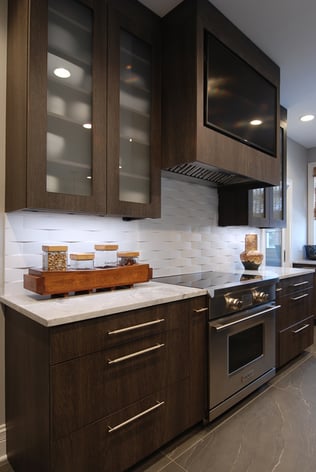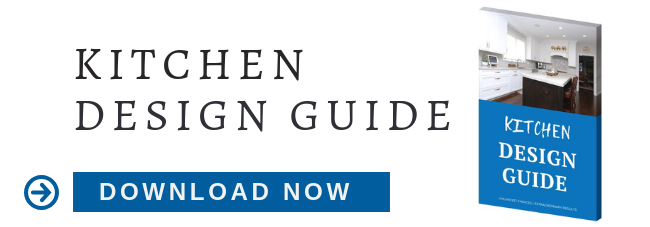 Induction cooktops are sleek additions to the Chicago kitchen remodeling market. Aside from their streamlined countertop aesthetic, these quick-cookin’ appliances are a safer option for households with kids or countertop-hopping pets since they don’t generate surface heat (Click Here to read about how induction cooktops work).
Induction cooktops are sleek additions to the Chicago kitchen remodeling market. Aside from their streamlined countertop aesthetic, these quick-cookin’ appliances are a safer option for households with kids or countertop-hopping pets since they don’t generate surface heat (Click Here to read about how induction cooktops work).
Is an Induction Cooktop Right for Your Chicago Kitchen Design?
People who love their induction cooktops love them, but others remain diehard fans of more standard gas- or electric stove tops. If you’re debating the addition of an induction cooktop for your remodel, weigh the following pros and cons to help you decide.
Things People Love About Induction Cooktops
Here are some of the leading reasons our clients swear by their induction cooktops.
They cook fast and efficiently
Induction cooktops heat things an average of 50% faster than gas or electric options. This is great news for cooks trying to squeeze homemade meals into the small time gaps between school, sports, late work schedules, etc. If that resonates with you, you’re probably a great candidate for a convection oven for similar reasons.
As a result of faster cooking times – and the lack of heat lost from the surface (see next) - induction cooktops conserve energy (roughly 10% to 20% less energy used per dish), leading to lower utility spending. If energy efficiency is important to you, read our post, Tips on Choosing Eco-Friendly Appliances…
Cool surface
Cooking heat is the result of electromagnetic energy generated between the "burner" and the pan, so the surface is cool to the touch when pans aren’t in place with the burner on. There’s no need to worry about small children or agile kitties getting burned or injured from latent, hot stovetop surfaces.
Easy cleaning
Because the surface isn’t hot, it’s easy to clean and wipe down the surface in an instant. And, since the surface is completely flat, it also eliminates the burned up crumbs and cooked-on gunk that tends to get in and around the burners and contours of standard cooktops.
Become an extension of the countertop
One of the unexpected bonuses of induction cooktops is that they become an extension of your countertop surface. While you shouldn’t chop veggies directly on the surface, it does become a flat surface for resting servingware, dishes, utensils, and other accessories – especially handy if you build your cooktop into the kitchen island.
Reasons Why Homeowners Opt NOT to Install an Induction Cooktop
Then there are the reasons why homeowners opt to install a gas or electric stovetop, rather than an induction version.
You need separate cookware
Electromagnetic energy relies on the magnets in the cooktop and the receptivity of the pan. As a result, only cast iron or induction-compatible pots and pans will work. Use a basic kitchen magnet on the bottom of your pots and pans to see if any of them will work. If the magnet sticks, it’s a go; if the magnet doesn’t hold, you’re in the market for a replacements.
It makes a slight buzzing sound
This results from the vibration of the pan on the cooktop’s surface, as well as the units cooling mechanisms, and can sound like a faint buzz or the white noise created by a fan. The sound is more apparent at higher cook setting. Some people are more bothered by it than others, so this may not be an issue if you aren’t sound sensitive. The heavier your pans the less they’ll vibrate so staying away from lighter, stainless steel pans may help.
No power, no cooking
Like electric stovetops, induction cooktops require electricity to work. If the power goes out, you can’t cook. The ability to cook regardless of rain, snow or ice storm power outages is something gas cooktop/oven enthusiasts swear by.
Would you like some professional help determining whether an induction cooktop is the way to go for your Chicago kitchen remodel? Schedule a consultation at Kitchens & Baths Unlimited and our design pros will help you make the best decision for your kitchen and lifestyle.



